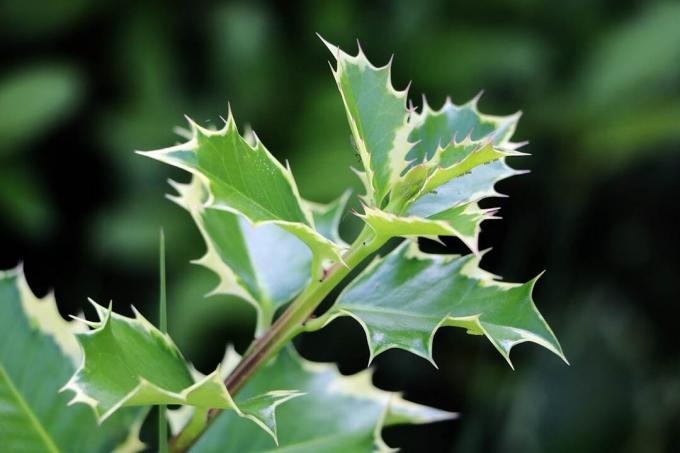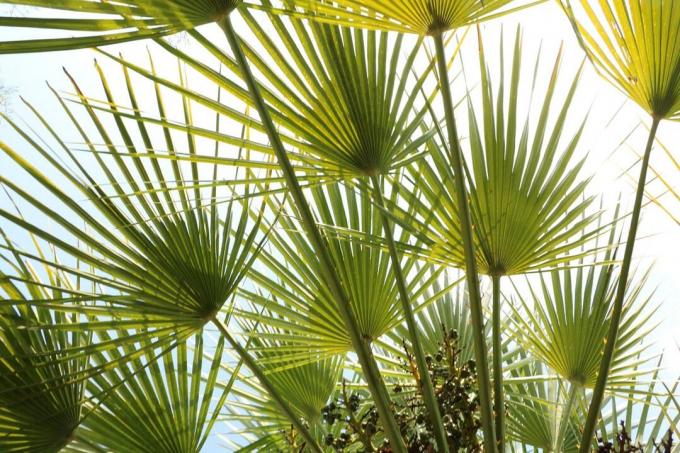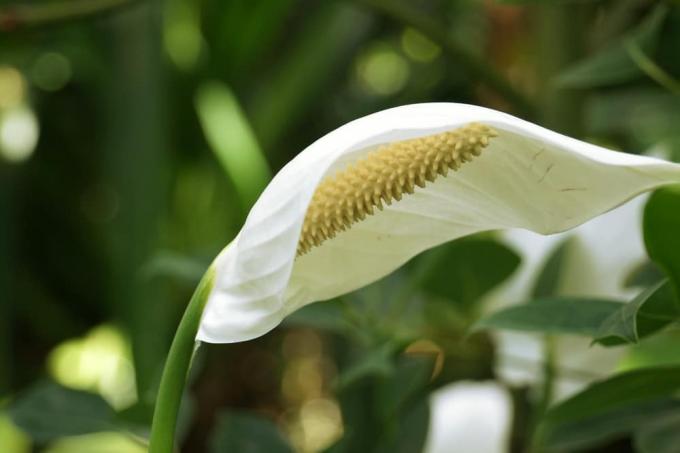
Table of contents
- Offshoot, Kindel, Keiki
- time
- separation
- cultivation
- encourage child education
- stimulate root growth
- Offshoots without roots
- substrate
- Conclusion
Orchids are one of the most popular indoor plants and are often given as gifts. With the right knowledge, the exotic plants are easy to cultivate and even easy to propagate. Those who practice patience and know the right tricks will soon be able to create their own with offshoots and children Give away offspring of the orchids - or an impressive collection and flowers create. With the following instructions, this can even be done without experience in plant care and even without a green thumb.
Offshoot, Kindel, Keiki
Whether they are called offshoots, Kindel or Keiki, we are talking about young plants of the orchid that form directly on the mother plant. The small orchids can be found on the actual inflorescences of the plant. If tiny leaves suddenly grow here instead of a flower, it is a so-called Kindel or Keiki. However, it would be devastating to reach for the knife directly and spend the offshoot separately in the substrate. Instead, you should wait with the separation until at least two sheets - better but more - are available. In addition, the child must be rooted. Only then is it easily viable on its own and ready for its own planter.
time
Due to the light conditions, more stable and higher temperatures and the beginning of the growth phase, spring is the ideal time for growing the Kindel orchid. The offshoots should be separated from the mother plant in April at the earliest. And only if they have the number of leaves and roots already mentioned. It can take a year for this to happen. So patience is required here. When the time comes, there are a few things to consider when removing the keiki.
Tip:
The growth of the offshoots can be accelerated by frequently spraying them with soft water.
separation
If the offshoots are ready to separate in spring or early summer, if the supporting stem turns yellow or even dries up, the following instructions will help you find the right one
Execution:
- 1. Before use, a sharp knife must be chosen that is thoroughly disinfected.
- 2. The offshoot is cut close to the mother plant without damaging the young roots or leaves.
- 3. To avoid infection and rot, all cut surfaces should be dusted with charcoal powder. Alternatively, sulfur powder can also be used or a short drying phase can be observed until the damp spots are closed and completely dry.
- 4. To grow the young orchids, either an orchid substrate or a special young plant substrate for orchids is selected. This is briefly soaked or sprayed thoroughly before use.
- 5. The offshoot is used in such a way that it is as stable as possible in the substrate. However, the leaves should be above the moist soil.
cultivation
In order for the children to grow into full-grown and strong orchids, they initially need high humidity. So it's not enough to just keep the substrate moist or spray every few days. Instead, the offshoot and substrate should be covered. This can either be done with a transparent foil, for example a plastic bag or in a greenhouse. Both the greenhouse and the film cover should be aired briefly every day to prevent rot. In addition, the bag can be provided with several small holes to improve the air conditions. If the child has new leaves or can no longer be pulled out of the substrate, the cover can be removed. Then the time has come to start fertilizing. Initially, however, this only takes place in a highly diluted dosage.
encourage child education
Some types of orchids, such as Phalaenopsis, Calanthe and Dendrobium, tend to form buds. However, this does not apply to all cultivated forms of these species, other hybrids and orchids. Nevertheless, at least the Phalaenopsis can be given a helping hand. So-called keiki paste is used for this purpose, which promotes the formation of offshoots through a stimulating hormone. The paste from specialist shops is applied specifically to dormant eyes on the flower stalks and can lead to accelerated formation of children here. However, such success is not guaranteed. If you still decide to try it, you should apply the keiki paste to the corresponding shoots of the orchid immediately after flowering. It is precisely then that it is easy to see where the flowers were and where children could form later.
stimulate root growth
Some orchid offshoots take a long time to grow their roots. This is of course unfavorable for rapid cultivation. A targeted intervention is also possible here. This guide shows how it can work:
- In order to promote overall growth, the offshoots should be sprayed regularly on the mother plant. The increased moisture has a strengthening effect and can accelerate root formation.
- To further stimulate root growth, a piece of moss is tied to the underside of the child and kept moist. The direct supply of water often activates the root systems and is quickly successful.
- If the measures described above are not sufficient, a small planter can be filled with substrate, moistened and attached under the offshoot. If the Keiki have contact with the substrate, the roots can grow directly into it and can be separated from the mother plant both faster and more safely.
- As a last possible measure, it can make sense to put a transparent plastic bag over the young shoot and carefully fasten it with a rubber band. This creates an ideal climate for growth and roots.
Tip:
In order to reduce the risk of rot, orchids should be allowed sufficient drying time between sprayings and be well ventilated. Covers are provided with holes and should be removed briefly every day.
Offshoots without roots
If the mother plant has been stressed or if care mistakes have gone unnoticed, the shoot may well die off. Even if there are children sitting on this orchid that are not yet rooted. In such cases, it is advisable to activate rooting as soon as possible. It usually takes quite a while for the stem to dry up from the tip to just above the substrate. So there is still a chance to save the offshoot in the ways described above. If the shoot has already died down to the offshoot, the child must be removed immediately. It is best when the stalk is still green below the child. It is cut in such a way that the flower stalk is cut just above the substrate. Dried residues are removed. With this alternative measure, the keiki is still attached to the stem of the orchid. Either wrapped in moss or placed on substrate, keep the orchid section moist until roots appear. It is also advisable to use not only water but also heavily diluted fertilizer for spraying. The extra nutrient intake can increase the chances of success. However, successful breeding is not guaranteed.
substrate
When growing the orchid from Kindeln, the right approach and the right time are important, as is the substrate. Only appropriate special substrates for orchids or sphagnum moss should be used to attach to the offshoot. However, the orchid substrates for adult plants are often too coarse to allow the children to grow quickly and easily. It is therefore recommended to crush the pieces of bark in the substrate. For this it is usually sufficient to break them up with your fingers and crumble them until a very fine structure is formed. Alternatively, orchid substrate for young plants or very small orchids can be used, which is available in specialist shops. This is finer from the start and thus offers a better starting point for the young roots. A change to the coarser, normal orchid substrate can take place when the plants are at least ten, preferably fifteen centimeters high and well established. This is usually the case when it has to be repotted for the first time anyway. However, the orchids can be cultivated like the mother plants from the very first new shoot.
Conclusion
The cultivation of orchids from children or offshoots is basically not difficult, but it does require some time, patience and the right approach. If you stick to it, you can easily grow young plants and multiply particularly beautiful specimens in order to create an even greater bloom.
 garden editorial
garden editorial I write about everything that interests me in my garden.
Learn more about Exotic Plants

Holly, holly: care from A to Z
The European holly is one of the evergreen plants. It reaches a height of up to five meters and is ideal as a Christmas decoration or garden shrub. The native, although rarely occurring plant is the only native representative of the Ilex family and is particularly easy to care for and robust.

Dwarf palm, Chamaerops humilis: care instructions
The dwarf palm remains small enough that it can also be cared for in the room. However, it also cuts a fine figure in the garden. You can find out here how it is maintained and what needs to be considered.

Dwarf date palm, Phoenix roebelenii: Care from A-Z
The dwarf date palm (Phoenix roebelenii) is a particularly small, actually the smallest palm species of its genus. But that doesn't make them any less decorative. It is the most filigree and elegant date palm and hardly grows higher than one meter.

Growing vanilla plants: 11 tips for care
The vanilla plant is truly exotic in Central Europe and cannot be found in every garden. Vanilla planifolia forms the aromatic pods for which the plant is known. The cultivation of a vanilla plant is easily possible with the right care tips.

Kangaroo Paw: Caring for the kangaroo plant
Kangaroo paws are exotic plants native to southwestern Australia. Considering the care instructions, Kangaroo Paw can also thrive in Central European conditions. Maintenance requires a little more effort. If the plant gets enough attention, it will thank you with magnificent inflorescences.

Einblatt, Spathiphyllum: care from A to Z
Because of simple! The single sheet draws everyone's attention with its extravagant appearance. The imposing flower gives sophisticated rooms that certain something. If the houseplant is in the right place, hardly any care is required. The breeder can find out here what demands Spathiphyllum places on their location.

